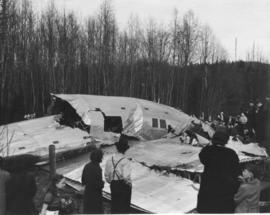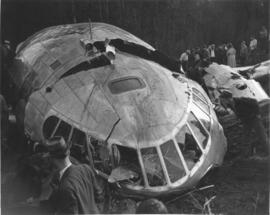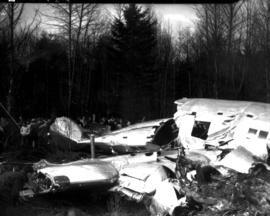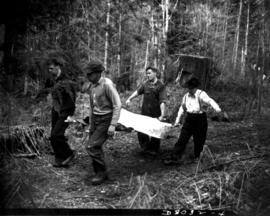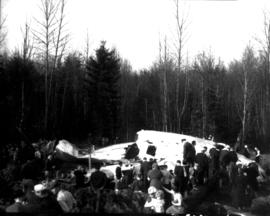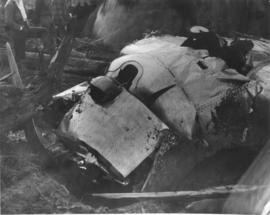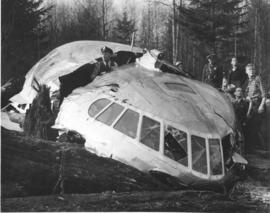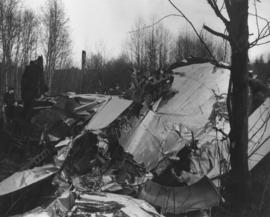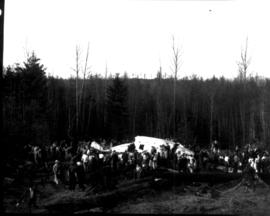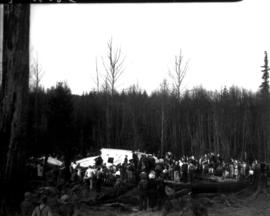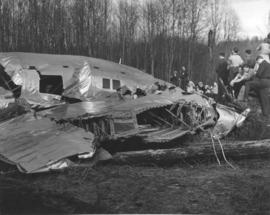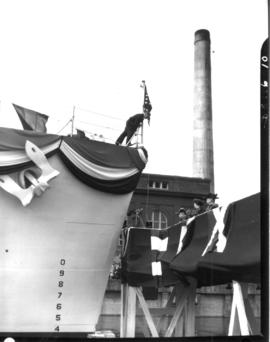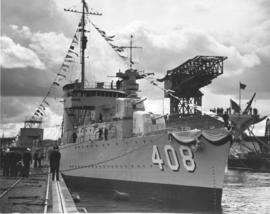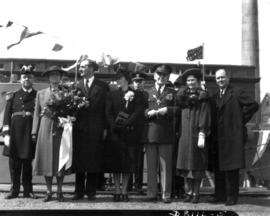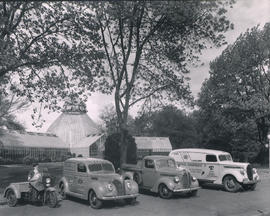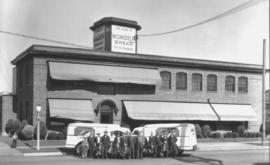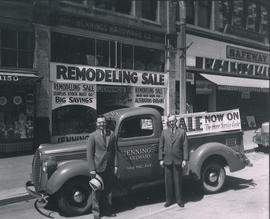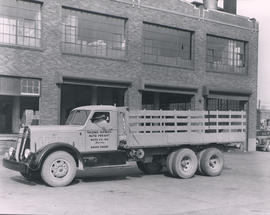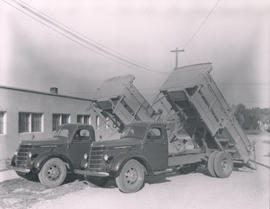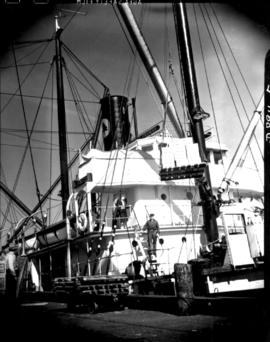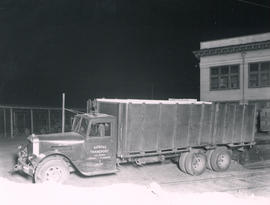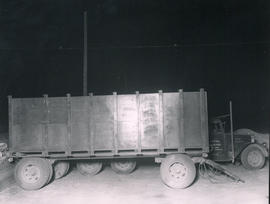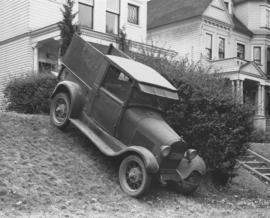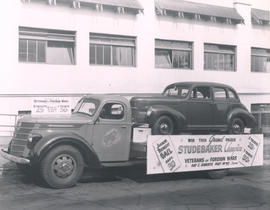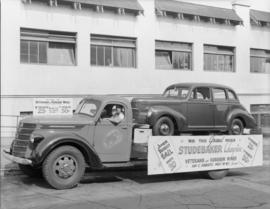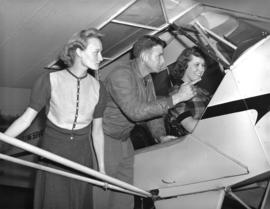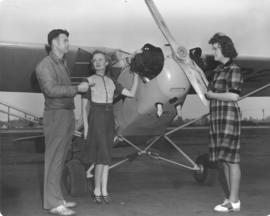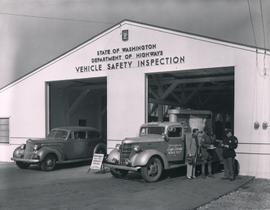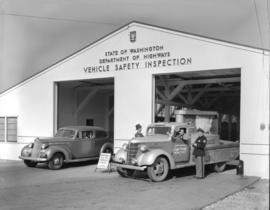- Item
- 1939-03-18
Part of Richards Studio Photographs
Crowds view the crumpled remains of the Boeing Stratoliner, which crashed near Alder, Washington, 30 miles southeast of Tacoma, on March 18, 1939. Close-up of wrecked airplane debris. The experimental craft, costing $500,000, and weighing 20 tons, was designed to revolutionize cross country transportation by air. March 18th was supposed to be uneventful "Test Flight #19," however the aircraft inexplicably crashed, killing the crew of ten. The Air Safety Board in June of 1939 ruled the accident was due to structural failure. The plane went into an inadvertent spin, subsequent to a stall at an altitude of approximately 11,000 feet. The board felt that the failure of the wings and horizontal tail surfaces were due to excessive loads, cause by air pressure. The loads were in excess of what the wings and tail were designed for. (T. Times, 3-18-39, p. 1, 3-20-39, p. 1; 6/2/1939, pg. 2)
Aircraft accidents--Alder--1930-1940; Boeing Stratoliner;
